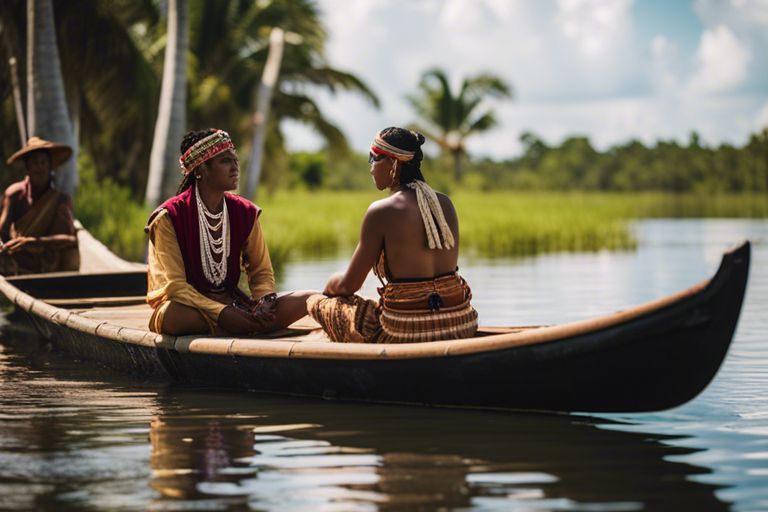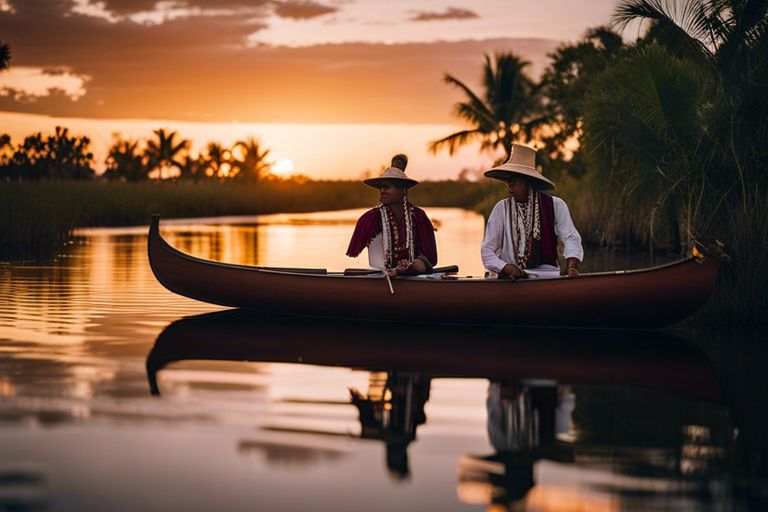Your cart is currently empty!

The Fascinating Indigenous Communities Of The Everglades – Who Are They?
Enveloped in mystical beauty and rich history, the Everglades is not only a vast expanse of wetlands but also home to numerous indigenous communities with deep-rooted connections to the land. These native inhabitants, such as the Miccosukee and Seminole tribes, have thrived in this unique ecosystem for centuries, preserving their traditions, language, and way of life. Delving into the fascinating world of the indigenous peoples of the Everglades unveils a tapestry of culture, resilience, and a profound understanding of nature that continues to inspire awe and admiration.
Historical Overview of Indigenous Presence
For centuries, the Everglades have been home to various indigenous communities with rich cultures and histories. These communities have played a vital role in shaping the landscape and biodiversity of the region. Understanding their historical presence is crucial to appreciating the diversity and importance of the Everglades’ indigenous populations.
Original Inhabitants and Migrations
Any discussion of the indigenous communities in the Everglades must start with the original inhabitants who have lived in harmony with the ecosystem for thousands of years. The Seminole and Miccosukee tribes are among the most well-known indigenous groups that have called the Everglades home. These tribes have a deep connection to the land and waterways of the region, with unique languages, traditions, and sustainable ways of life.
As the climate and environment of the Everglades changed over time, various indigenous groups migrated to the region, seeking refuge and resources. Each group brought its own cultural practices and knowledge, enriching the tapestry of indigenous heritage in the Everglades. These migrations have contributed to the diversity and resilience of the indigenous communities that continue to thrive in the Everglades today.
Impact of European Colonization
Historical records indicate that the arrival of European colonizers in the Everglades had a profound impact on the indigenous communities. The Seminole Wars in the 19th century resulted in the forced removal and relocation of many indigenous people, disrupting their traditional way of life and eroding their lands and resources.
To this day, the legacy of European colonization continues to shape the experiences and challenges faced by the indigenous communities of the Everglades. Despite centuries of adversity, these communities have persevered and maintained their unique cultural identities, serving as a testament to their resilience and strength in the face of historical injustices.
The Seminole Tribe of Florida
Obviously, when exploring the indigenous communities of the Everglades, one cannot overlook the Seminole Tribe of Florida. The Seminole people have a rich history and vibrant culture that has stood the test of time in the face of adversity.
Origins and Identity
On the fascinating journey through the annals of Seminole history, one learns that the tribe is a combination of several indigenous groups that came together in Florida during the 18th century. These groups included the Creek, Miccosukee, Hitchiti, and others, who sought refuge in the Everglades to escape European colonization and maintain their way of life. The Seminoles formed a distinct identity, blending their customs, languages, and beliefs.
Culture and Traditions
Culture and Traditions
Traditions play a significant role in Seminole culture, shaping every aspect of daily life from art and music to practices like patchwork clothing and doll-making. Each tradition holds deep meaning and serves to connect the Seminole people to their ancestors and the land they have inhabited for generations.
The Miccosukee Tribe of Indians of Florida
Tribe Recognition and History
Unlike some other Indigenous communities in the U.S., the Miccosukee Tribe of Indians of Florida has maintained its distinct identity and sovereign status. The tribe was recognized by the federal government in 1962, and today, they are a federally recognized tribe with their own government and reservation in southern Florida.
Tribe history traces back to the Creek people who migrated from the north to Florida in the 18th century to resist European colonization. The Miccosukee separated from the Seminole Tribe in the early 20th century and established their own unique culture and traditions.
Contemporary Lifestyle and Culture
Tribe members continue to preserve their rich cultural heritage through traditional practices like beadwork, patchwork, and doll-making. The Miccosukee Tribe is known for their vibrant arts and crafts, with intricate designs that reflect their connection to nature and spirituality.
Contemporary Miccosukee life also includes rodeo events, tribal festivals, and celebrations that showcase their unique traditions and bring the community together. The tribe is dedicated to passing on their cultural knowledge to future generations, ensuring that their legacy endures for years to come.
Contemporary lifestyles among the Miccosukee Tribe blend traditional practices with modern influences, creating a dynamic and evolving cultural identity that resonates with their ancestral roots while embracing the present day.

Coexistence with the Everglades
Environmental Stewardship
Stewardship is at the core of the indigenous communities living in the Everglades. These communities have a deep-rooted respect for the land and its resources, understanding the delicate balance needed to coexist with the unique ecosystem of the Everglades. Through traditional practices and knowledge passed down through generations, they actively engage in environmental stewardship to preserve the natural beauty and biodiversity of this precious landscape.
From sustainable hunting and fishing techniques to mindful harvesting of plants, the indigenous communities demonstrate a harmonious relationship with the Everglades. They recognize the importance of conservation efforts and work tirelessly to protect the environment that sustains their way of life. By practicing responsible resource management and advocating for the preservation of their ancestral lands, these communities serve as environmental stewards and guardians of the Everglades.
Challenges and Opportunities
Stewardship is not without its challenges in the Everglades. The rapid urbanization and development surrounding this unique ecosystem pose significant threats to its delicate balance. Pollution, habitat destruction, and climate change are pressing issues that indigenous communities must navigate as they strive to protect their sacred lands. Despite these challenges, there are also opportunities for collaboration and innovation. By partnering with governmental and non-profit organizations, indigenous communities can amplify their voices and leverage resources to address environmental threats and implement sustainable solutions.
Environmental challenges in the Everglades require a multi-faceted approach that includes community-driven initiatives, policy advocacy, and education. By harnessing the traditional ecological knowledge of indigenous communities and combining it with modern science and technology, we can work towards a more sustainable future for the Everglades. Through collective effort and a shared commitment to environmental stewardship, we can safeguard this unique ecosystem for generations to come.
To wrap up
From above, the intricate tapestry of indigenous communities that make up the Everglades reveals itself. These tribes, such as the Miccosukee and Seminole, have rich histories and cultural practices that have endured for centuries. Their resilience and connection to the land serve as a reminder of the diverse and storied history of the Everglades region. By learning more about these fascinating indigenous communities, we gain a deeper appreciation for the vital role they play in the preservation of the unique ecosystem of the Everglades. It is crucial to continue to honor and respect these communities and their traditions as we work towards a sustainable future for this invaluable natural treasure.
FAQ
Q: Who are the indigenous communities of the Everglades?
A: The indigenous communities of the Everglades are primarily made up of the Miccosukee and Seminole tribes. These tribes have a long-standing history in the Everglades region and have maintained their cultural traditions and connection to the land for generations.
Q: What are some key aspects of indigenous culture in the Everglades?
A: Indigenous culture in the Everglades is rich and vibrant, with a strong emphasis on traditional practices such as hunting, fishing, and storytelling. The tribes also have a deep spiritual connection to the land and the natural world, which is reflected in their ceremonies and rituals.
Q: How are indigenous communities in the Everglades preserving their heritage?
A: Indigenous communities in the Everglades are actively working to preserve their heritage through cultural programs, language revitalization efforts, and eco-tourism initiatives. By sharing their traditions with the public and teaching younger generations about their cultural heritage, these communities are ensuring that their way of life will continue for years to come.
Leave a Reply